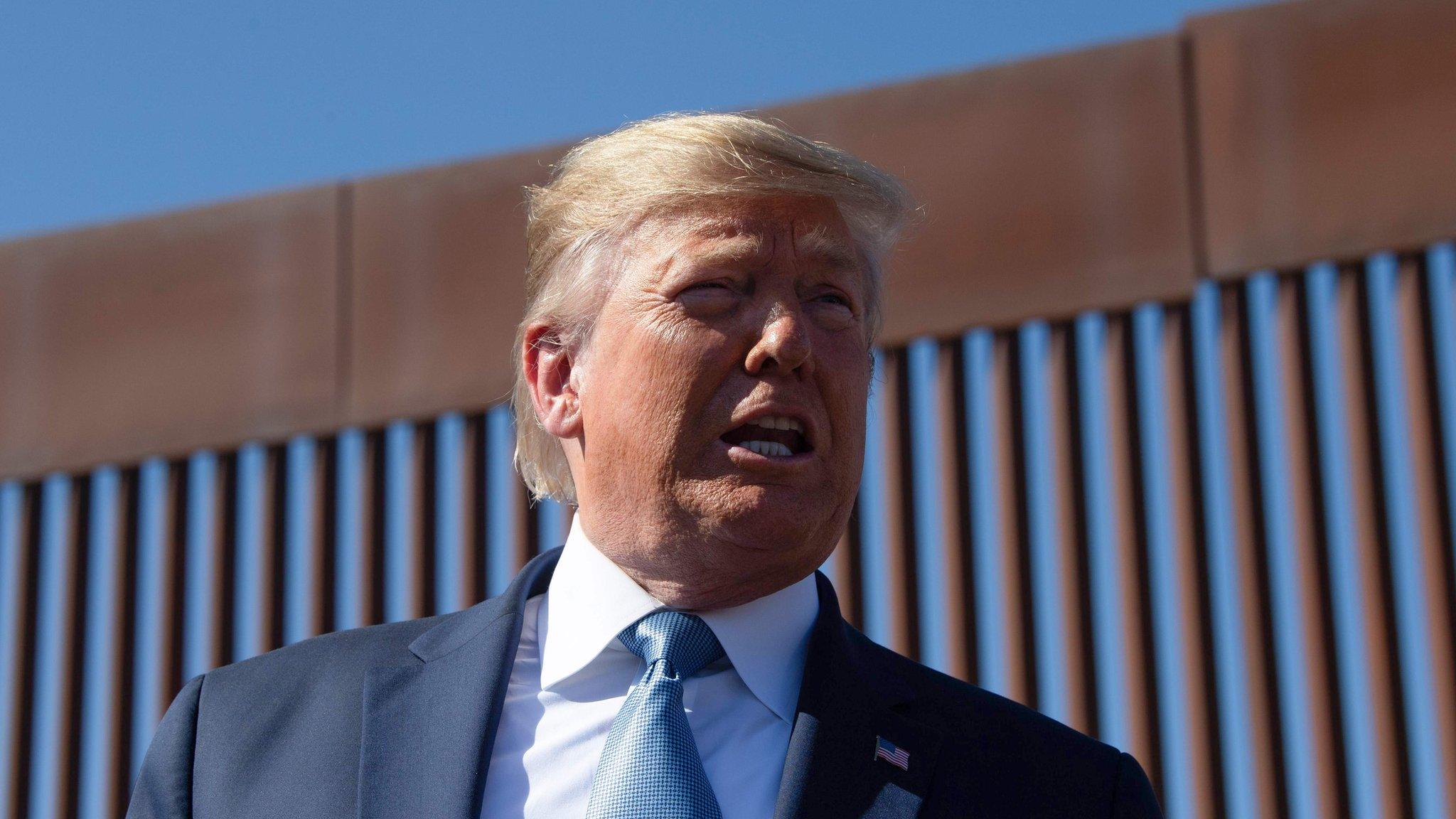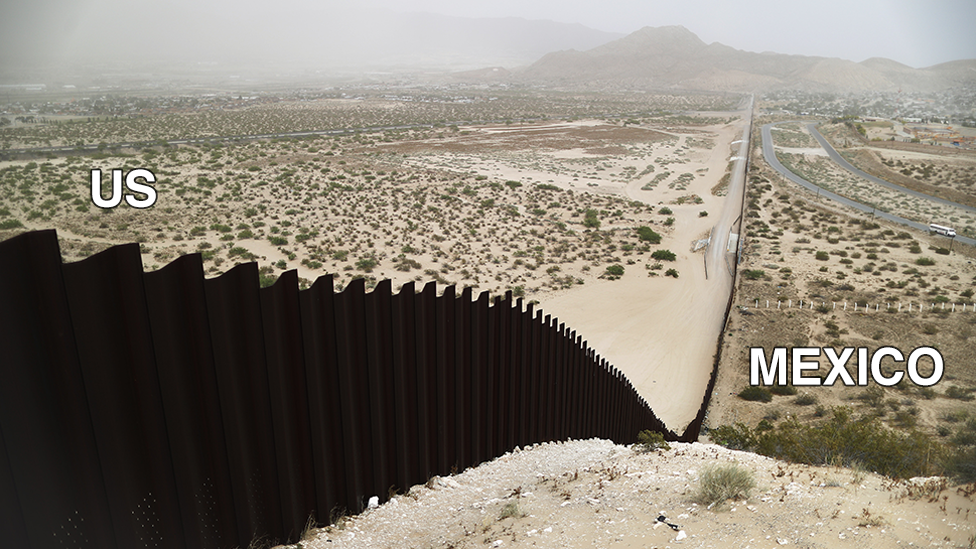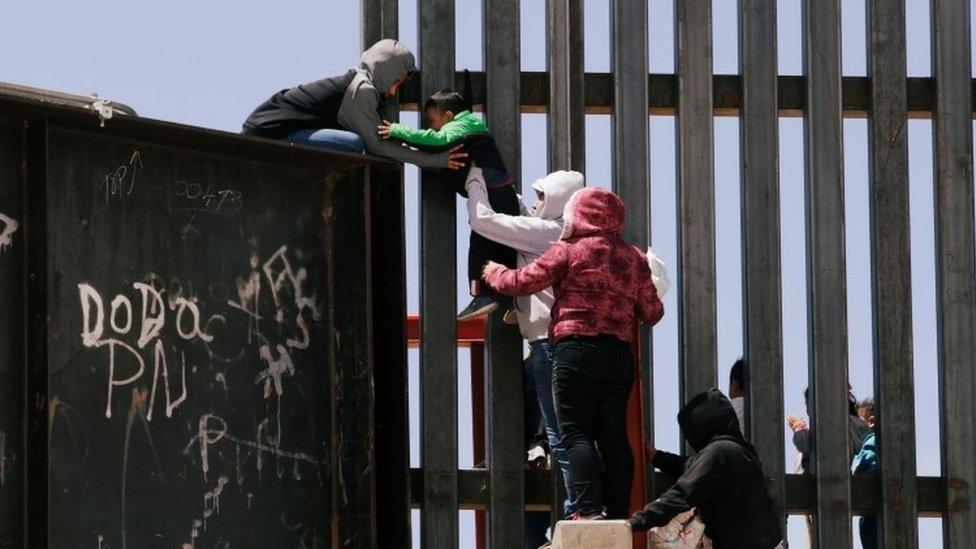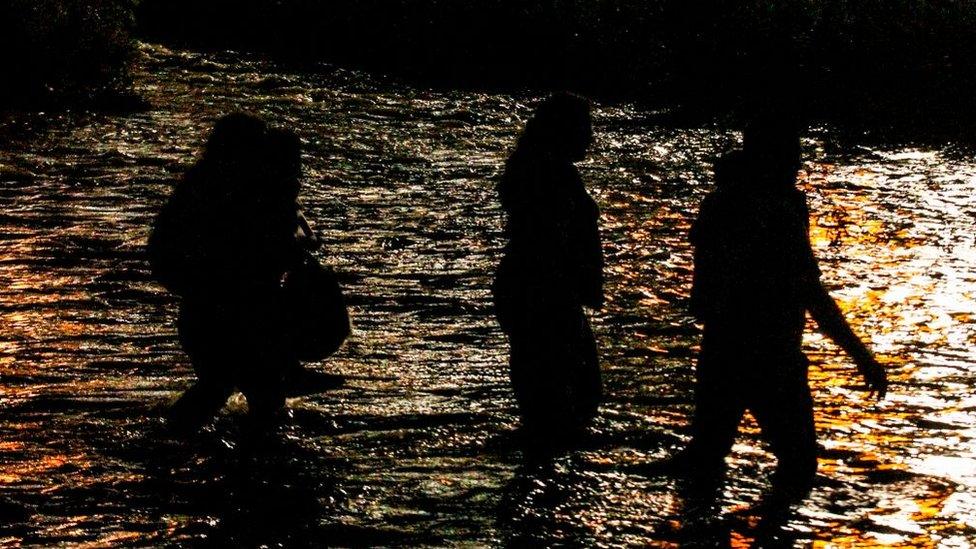Donald Trump 'suggested shooting migrants in the legs'
- Published

US President Donald Trump suggested shooting migrants in the legs to slow them down, according to a new book.
The book, by two New York Times journalists, says Mr Trump suggested extreme methods of deterring migrants from crossing the southern border.
They included building an electrified, spiked border wall and a snake or alligator-infested moat.
Calling the claims "fake news", Mr Trump tweeted: "I may be tough on border security, but not that tough."
Allow X content?
This article contains content provided by X. We ask for your permission before anything is loaded, as they may be using cookies and other technologies. You may want to read X’s cookie policy, external and privacy policy, external before accepting. To view this content choose ‘accept and continue’.

Building a wall on the border with Mexico is one of Mr Trump's main policy objectives.
The construction of the wall has now begun, with the Pentagon allocating $3.6bn (£2.9bn) of military funding towards its development.
What are the authors' claims?
The book - called Border Wars: Inside Trump's Assault on Immigration, by reporters Michael Shear and Julie Davis, and based on interviews with more than a dozen unnamed officials - was published by the New York Times, external.
It chronicles a week in March 2019 when Mr Trump reportedly tried to halt all southern migration to the US.
According to an excerpt, the president privately suggested to aides that soldiers shoot migrants in the legs, but he was told it would be illegal.
Previously, Mr Trump had made a public statement suggesting soldiers shoot migrants who throw rocks.
Mr Trump suggested other extreme measures, according to the book.
"Privately, the president had often talked about fortifying a border wall with a water-filled trench, stocked with snakes or alligators, prompting aides to seek a cost estimate. He wanted the wall electrified, with spikes on top that could pierce human flesh," reads the extract.
Cartels, kidnap and torture on the US border
The excerpt describes Mr Trump ordering aides to enforce a complete shutdown of the US-Mexico border by noon the following day, leaving advisers "in a near panic" and "desperately" trying to placate the president.
"Mr Trump's order to close the border was a decision point that touched off a frenzied week of presidential rages, round-the-clock staff panic and far more White House turmoil than was known at the time," the excerpt says.

Aides reportedly managed to change Mr Trump's idea of closing the border, but the president later pushed out a number of senior aides who he believed were frustrating his immigration crackdown, including Homeland Security Secretary Kirstjen Nielsen.

Step into the shoes of a migrant
Use our interactive bot that tells the story of one woman, Maria, who represents the real experiences of many of those seeking to make the journey to the US.

What's happening at the border?
Mr Trump has made a crackdown on illegal migration a key priority of his presidency since his 2016 election campaign.
The Republican president's stance has led to frequent run-ins with Democrats in Congress, with particular flashpoints including the conditions within migrant detention facilities and funding for the wall.
In February, Mr Trump declared an emergency on the US-Mexico border to free up federal funding.
In June, he signed a 90-day deal with Mexico aimed at reducing the flow of migrants crossing into the US.
The deal involved initiatives like closer bilateral co-operation and Mexico deploying thousands of National Guard troops throughout the country.
Last month, Mexico reported that it had successfully curbed the number of undocumented migrants crossing into the US by 56% since May.
However, while figures show that illegal border crossings into the US have seen an overall decline since 2000, they have been rising again since Mr Trump took office.
The current financial year has so far seen more than 800,000 people detained on the southern US border - already twice the total for 2018.
Many of those arriving are fleeing violence or poverty and travel north through Mexico until they reach the US border.

- Published31 October 2020

- Published11 July 2019

- Published7 July 2019
